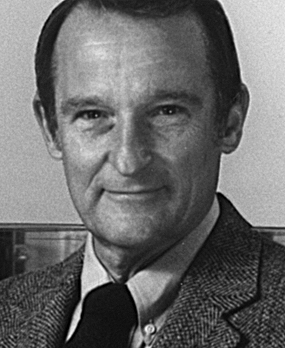How has he transformed the scene?
At Engineering Research Associates, Cray was part of the design team that orchestrated a shift in computer technology from military to commercial applications, pioneering development of the digital computer. While at ERA, one of his first projects in a lead design role was the ERA 1103, the first commercially successful scientific computer.
“Cray's genius and singular drive have marked indelibly the technology of this century.”
Russell Mitchell, “The Genius: Meet Seymour Cray, Father of the Supercomputer,” (in) BusinessWeek, April, 1990
As an engineer for Control Data Corporation (1958-72), Seymour Cray specialized in design of large scientific computers. He designed the first commercial supercomputer, the CDC 6600, which was ten times faster than anything on the world market at the time. He soon followed up with another major leap in design, the CDC 7600. The design innovations were instrumental in driving demand for Control Data computers in government laboratories and research universities around the world. CDC moved to a leadership position in the industry, and the name “Cray” found its place in the history books as an engineering genius. Upon leaving CDC, he would continue to design ever-faster computers and explore new approaches to supercomputer technology through business ventures such as Cray Research, Cray Computer Corporation and SRC Computers.
“He’d always look at something from a very different angle, not colored by the perceptions people usually have. Whether it was a computer to be engineered, or a current event in the news, his take on it would somehow manage to be both naïve and really insightful.”
Susan Cray Borman, daughter, Seymour Cray
With revolutionary “vector processing,” and other innovations, Cray was able to vastly enhance computer systems’ memory and capacity to multi-task, with tremendous applications for science research. This new generation of supercomputers accelerated the pace and improved the efficacy of research in many disciplines, because it could better translate complex physical phenomena into mathematical terms for modeling purposes. In short, Cray’s designs made computers a more effective tool for scientists to better understand the real world.
Seymour Cray passed away in 1996. By all accounts, Seymour Cray was a fascinating figure, a brilliant man and an inspiration. He was genuinely motivated by intellectual curiosity. He not only excelled in his field, he loved his work. He lived a life fully engaged, and brought about immeasurable, near-miraculous progress in the high-tech arena. As his daughter Susan notes, he was able to “refine things to their essence:” truly a gift to us all.

